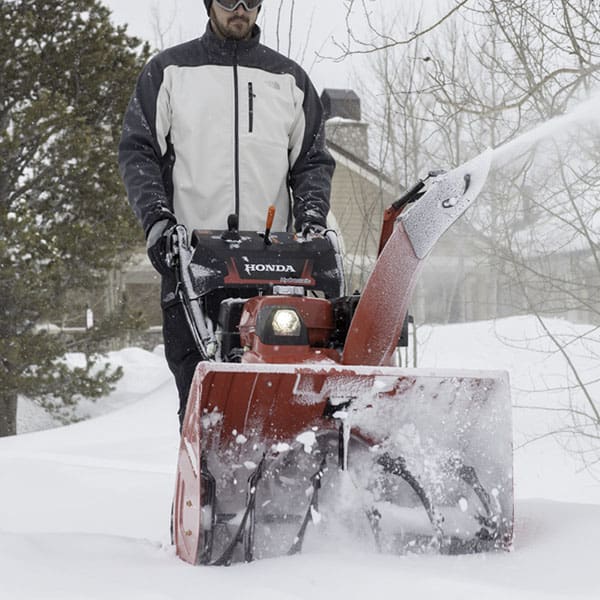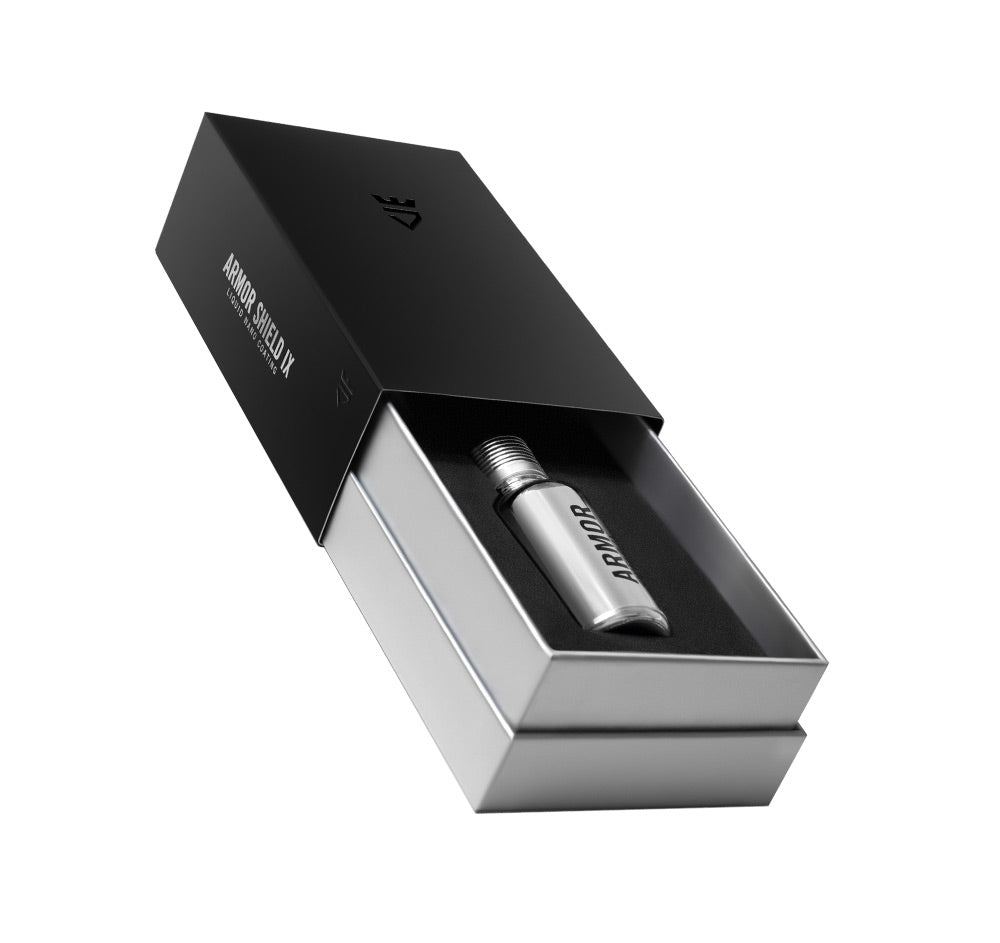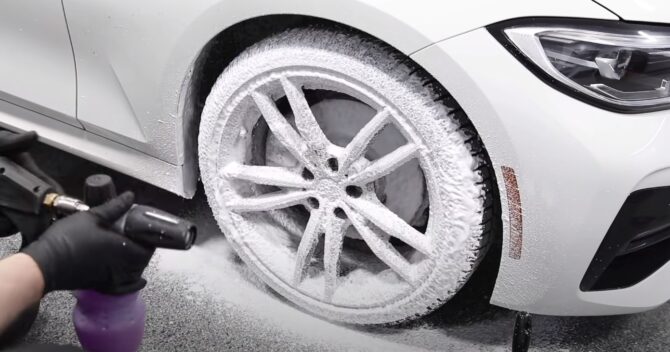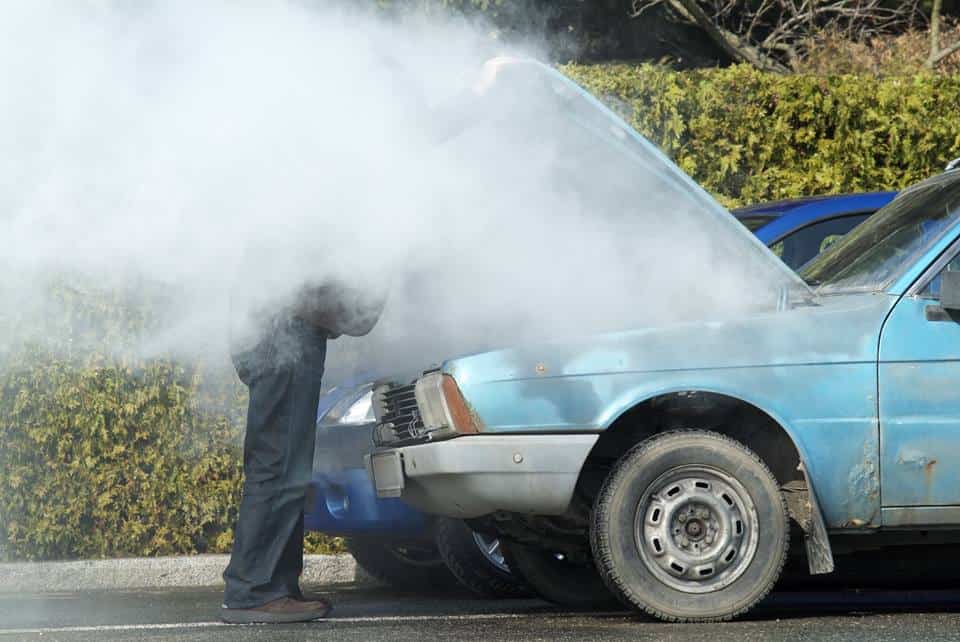As the cold winter wind blows, so too does your nose.
With frost-bitten toes aching beneath layered clothes, you ponder why you never invested in a machine that throws winter snow “to and fro.”
There is no nice way of placing displaced ice into prose, and so we slowly groan that shoveling snow does indeed blow.
So what are the pros of ceramic coating that wintry mix remover you just bought down at Lowes? Will it make you the envy of all the neighborhood bros? Does it go even when temps are well below zero?
Today, these and many more icy unknowns shall be exposed, as we go toe-to-toe with all that froze.

Photo Credit: Toro
How a Snow Blower Works
Some say that I’ve been reading entirely too much Robert Frost as of late (dad jokes strike again!), while others assume that America’s record-setting snow storms have left me pondering the duality of winter’s wrath. For as silly or cerebral as it sounds, the truth of the matter remains far more focused on the practical than the poetic. Snow blowers get clogged. A lot.
To offset this issue, a few enterprising minds have begun to ceramic coat their snow blowers, and to record their findings. After recently discovering this unorthodox ceramic coating topic of discussion, I became hopelessly intrigued by this creative solution to a “sticky situation,” and begun to do my own research. this is what I turned up…
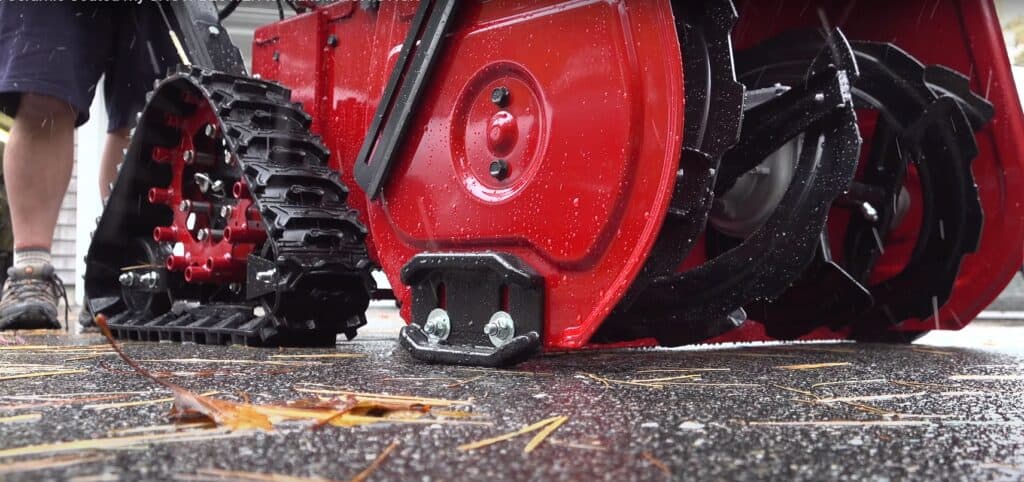
Photo Credit: Silver Cymbal/YouTube
The Difference Between a Snow Blower and a Snow Thrower
According to lifestyle help specialist and appliance and tool information wizard, Bob Vila, a snow blower operates in a very simple manner. He also stresses that contrary to common belief, there is a difference between a snow blower and a snow thrower, which as you shall soon discover, has its own strengths and weaknesses.
A single-stage snow thrower is a fairly simple piece of machinery that scoops-up snow, and then “throws” it out of a chute. This process is achieved via the rotation of a horizontally mounted auger, which channels the snow toward the chute, where the icy stuff is then forcefully ejected. While throwing distances range anywhere from 15 to 25 feet, the fact that throwers are limited by their “single-stage” design render them useless when snowfall tops 15 to 18 inches.

Photo Credit: Kreider Four Seasons Equipment/Facebook
Get to Know Your Snow Blowers
Dual-Stage Blowers
A snow blower, on the other hand, thrives in heavy snowfall situations, as the corkscrew-shaped auger rests higher up, and the unit itself tends to be wider. Snow blowers also rely upon an impeller, or fan, to suck-in and blast-out the freshly displaced stuff. It may look similar than a snow thrower, what with its rotating auger and discharge chute, but there are some significant differences between the two.
Unlike a snow thrower, which is limited by a single “feed-and-force” motion, the impeller on a snow blower allows the machine to dispel deep drifts at rapid rates, and far further to boot. This explains why these badass outdoor machines are labeled as “two-stage” units, and remain the far more popular purchasing option.

Photo Credit: Husqvarna
Triple-Stage Blowers
As your pervy uncle drunkenly decreed at the family reunion the other week, when it comes to pickup trucks and porno flicks, “SIZE MATTERS.” Apparently the same can be said for snow blowers, which is where a triple-stage, or three-stage model comes into play.
These badass blowers not only contain an auger and an impeller, but an accelerator as well. Slapping an accelerator in a snow blower isn’t just done for shits-and-giggles either. Much like a supercharger on an automobile, the accelerator forces collected snow away from the auger, and toward the impeller at a far faster and more forceful rate. Reports of snow flying well over 50-feet are often recorded with these monsters, and buyers can choose from wheeled and track-equipped models for added safety and grip.
An article published by Consumer Reports explains that these useful tools are a must have tool for anyone living in an environment where major snowstorms kick everyone’s ass a few times a year. No one likes the feeling of being trapped in their home, as they wait for a neighbor to come plow their drive, or use the very tool we are discussing today. This is precisely why the publication conducted such an extensive in-depth test of the latest snow blowers on the market.
Quick Nerd Note: Depending upon the unit in question, the average single-stage snow thrower setup can only clear a path that’s 11-22 inches in width at one time. Whereas a common two-stage snow blower can displace 24-26 inches of wintry mix, and hardcore, triple-stage blowers have been known to carve anywhere from 30-45 inches of snow in a single swipe.

Photo Credit: @cole.nowakowski
Why Ceramic Coat a Snow Blower?
So now that we’ve discussed the mechanics of these noisy, yet incredibly useful pieces of mechanical ingenuity, we turn toward the core cause for this blog feature. Why in the ever-loving hell would you ceramic coat a snow blower?
Traditional Non-Stick Methods and Products

Photo Credit: Nina Moran/Facebook
People in northern climates sure have tried applying some interesting things to their snow blowers to prevent snow and slush from sticking. Accounts of DIY experimentalists slathering things like silicone, non-stick cooking pan spray, and moose lard on their machinery. OK, so maybe the jury is still out on the whole moose lard approach, but the votes are in when it comes to non-stick cooking sprays, silicone, and spray-on polymer coatings.
While silicone has been proven to be the least effective of the lot, non-stick cooking spray works fairly well, but it also has shit for longevity, and therefore must be reapplied regularly. And although the petroleum-based chemicals found within polymer snow coatings fair quite a bit better when slathered across the inner regions of a snow blower, they too struggle to stay slick after clearing a driveway.

Photo Credit: Milwaukee Journal Sentinel/Facebook
Ceramic Coatings and Snow Blowers
Since the products that have been traditionally marketed as “non-stick spray solutions” have been proven to either fail to work as expected, or must be routinely reapplied in order to prevent clogged chutes, the need for a fresh option has arisen. Enter the modern nano ceramic coating.
Whereas labels on traditional snow blower coatings say things like, “…the more often you use it, the better it gets…” a nano ceramic coating like Armor Shield IX will get the job done from day one, and will keep doing so without the need for additional layers or intensive maintenance.
Although the whole “ceramic coated snow blower craze” still has yet to reveal what the coating’s longevity will look like, it’s safe to assume that most DIY devotees will see at least a season or two of snow-repelling power.
So while long-term durability remains an unknown factor, there are some definitive facts that are worth discussing. Single-stage snow blowers/throwers tend to bog down when faced with deeper accumulation levels. The slushy, densely packed stuff gums everything up, and the machine fails to function properly due to not having an impeller or accelerator. These issues are even more prevalent when you factor in the fact that single-stage units tend to be weaker than their multi-stage alternatives.
Applying a layer of 9H-rated nano ceramic coating with at least an 80% silica count to the areas of the blower or thrower that come into contact with snow will help negate this issue, and in certain cases, prevent scratching and rust from forming.

Photo Credit: Toro
Nano Ceramic Coating Science vs Slushy Snow
Being that 9H-rated ceramic coatings rely upon nano-technology to function, they have the ability to create an extremely powerful “hydrophobic effect.” Scientifically speaking, if “hydro” is water, and “phobic” is having an aversion to something, then slapping the two together translates to “water aversion.”
Essentially, things that are sticky or wet (like densely packed snow) tend to slide right off a vehicle that’s been protected by a nano ceramic coating. By ceramic coating a snow blower chute, auger, impeller, etc, you are adding a super-slick, completely invisible shell to the area where clogging tends to occur most often.
The result: Snow and ice slide through the apparatus smoother than a sumo on a lubed-up slip-and-slide. Wintry precipitation gets flung further, the blower/thrower doesn’t have to work nearly as hard, and the operator doesn’t have to stop to clean the damn thing out every few dozen steps. This expedites the entire operation, while reducing wear-and-tear on the snow remover and the human controlling it.
Quick Nerd Note: The top of the front intake chute on a snow blower is oftentimes higher than it is on a snow thrower, making them ideal for heavy snowfall situations. A snow thrower on the other hand, tends to be far more lightweight, and being that its intake scoop and auger sit closer to the ground, dispersing lighter accumulations of snow remain its specialty.

Photo Credit: Silver Cymbal/YouTube
6 Things to Consider When Ceramic Coating a Snow Blower
There are quite a few things to consider before coating something like a snow blower or snow thrower. Unlike automobiles, these machines function in a very different manner, and undergo unique kinds of abuse.
While preventing sticky snow from clinging to the auger, impeller, and chute of a snow blower is indeed crucial, the application of a nano ceramic coating does come with a few warnings. Here are six things to beware of if you plan on ceramic coating your snow blower or snow thrower.
- NEVER apply a ceramic coating when temps dip below 45° Fahrenheit (8° Celsius) or you will run the risk of the product not curing properly. Cold temps make ceramic coatings appear blotchy and greasy, and when they don’t level well, tend to require immediate removal. If you absolutely have to ceramic coat your snow removal machinery in winter, do so in a heated garage or indoors.
- Having a smooth, completely clean canvas is crucial when ceramic coating any surface, and snow blowers take a fucking beating. So unless you’ve just purchased a brand-new blower, you are going to need to remove any scratches or imperfections and then repaint or powder coat accordingly.
- A full surface prep process is required for all used machines. That means spray, shampoo, scrub, towel dry, and isopropyl alcohol (IPA) blend wipe-downs are all on the roster. However, if you are coating a brand new snow blower you can skip straight to the IPA wipe-down stage.
- Allow the damn thing to cure. We get a lot of complaints from customers in colder climates, who say that their ceramic coating job is failing because they did not wait a full 48 hours. This is not just random advice. Two full days is the bare minimum dry time, and waiting a full two weeks for the coating to completely cure is even better.
- Salt is like sandpaper, and you don’t want that shit languishing on your machine, regardless as to whether it has been ceramic coated or not. This is why we suggest spraying the entire contraption down with a garden hose or a pressure washer that’s been set on its lowest setting after each use, followed by a blast of clean air from a leaf blower. You can also use a microfiber towel (like AvalonKing’s all-new microfiber plushies) to soak-up any water spots.
- Finally, NEVER, under any circumstance, should you prep a surface with gasoline or antifreeze. It may sound strange that we actually have to say this, but you’d be surprised by the amount of people out there who actually consider these products as legit cleaning liquids.

Photo Credit: WSDOT/Facebook
Parting Shots
Once all of the perks have been tallied-up, the unorthodox notion of ceramic coating your snow removal machine really starts to make sense. Sure, the whole “ceramic coat your snow blower craze” is still in its infancy, but with the Atlantic Gulf Stream slowing, and record snowfalls pummeling our posteriors, there is renewed interest in the product from snow blower owners.
While YouTube channels like Silver Cymbal have paved the way via straightforward videos showcasing the perks of ceramic coating products, there are still many unknowns in both the longevity and durability department.
All told, we’ve come a long way since the days of Clark W. Griswold’s “secret sled spray,” and using cooking spray as a moisture repellent and ice buildup blocker. Those of you with snow removal experience know that a clogged blower is a royal pain in the ass to clean out, and when time is of the essence, a complete waste of man hours and energy.
So if you are planning on purchasing a brand new blower, or are considering modifying your old unit, try out a bottle of Armor Shield IX by AvalonKing. There’s a reason why it wears the crown for being the highest reviewed DIY ceramic coating product on the market today. Who knows? Maybe someday soon it will earn a title belt for being the greatest snow repellent product on the planet as well.

Photo Credit: Lamb & Webster, Inc/Facebook





